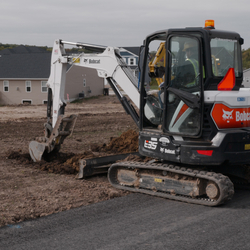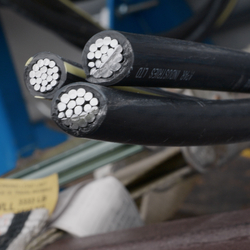Strengthening Our Grid for the Future
We know that reliable power is a critical need for Michigan. That’s why we constantly monitor our system performance and reliability to find opportunities for improvement.
One way to improve reliability is by relocating powerlines from overhead to underground, often called “undergrounding.” But it's not as simple as just burying lines – we look at which locations are safest and most cost-effective to prioritize upcoming projects.
Benchmarking with other utilities validates the underground approach will lead to safer and more reliable service for our nearly two million Michigan electric customers.
And that means fewer, shorter and less frequent power outages for them. It’s all part of our Reliability Roadmap, designed to strengthen Michigan’s electric grid for the future.
“The three priorities of our underground department are safety, reliability and cost,” said Trent Gilmore, Sr. Manager of Electric Underground Construction at Consumers Energy. “This program has already been successful. In the last few years, we have grown to 90 workers. This skilled workforce has allowed us to install new services at a reduced cost and positions Consumers Energy to ramp up to perform undergrounding of overhead circuits where it makes sense.”
 Safety
Safety
Burying our lines means there’s less storm impact with fewer downed wires.
“This leads to safer communities that we serve,” said Gilmore. “And it will keep our employees and first responders safer as well, especially during major outage events, like severe storms that have been hitting us more frequently.”
Also, with increased undergrounding, first responders can focus on other pressing emergencies since the underground system is less impacted by severe storms.
Reliability
Energy providers who have buried lines have reported a 90% improvement in reliability in those areas. Consumers Energy is ramping up its efforts to underground 400 miles of lines per year.
Consumers Energy reduced the length of the average customer outage in 2023 during normal weather conditions just under 3 hours, that’s a 20-minute reduction over the average for the previous five years.
“And we are building on that progress. There’s no one magic bullet that will get us to our reliability destination,” said Gilmore. “But there will be a lot of things that will help, including undergrounding and other emergent technologies.”
That technology includes Automatic Transfer Reclosers (ATRs) and line sensors that detect when there are issues with our lines.
Our drones and helicopters have also been instrumental in identifying issues quickly, so our lineworkers and other boots-on-the-ground workers can restore power in a safe, efficient manner.
We caution that when the public uses drones, please don’t do so around power lines and substations.
 Cost
Cost
Investing in underground facilities also reduces the need for tree-trimming in those areas. Over time it will reduce our storm and maintenance expenses, Gilmore said.
“Consumers Energy’s Electric Underground Construction department is the lowest cost option to install an underground electric system,” said Gilmore. “It will help our customers save money on their energy bills and effectively manages our investment in the system.”
However, for a number of reasons, it will never be feasible to put all wires below ground.
“Where it makes sense, burying lines will be extremely valuable since they are protected from damage caused by wildlife, humans and storms,” Gilmore said.
Currently, about 15 percent of our electric lines are underground. Many of these underground locations are in subdivisions and areas with high population density.
“We can’t control the weather, but we can control how we prepare for more extreme storms,” said Chris Laird, vice president of election operations. “Burying lines is just one tool we can use in our growing toolbox to prevent outages from impacting our customers. We are committed to delivering more reliable, resilient energy for every customer.”
Always contact MISS DIG 8-1-1 at least three working days prior to planting to have underground facilities marked. For resources on safe digging or to submit a request, visit missdig811.org or call 8-1-1.